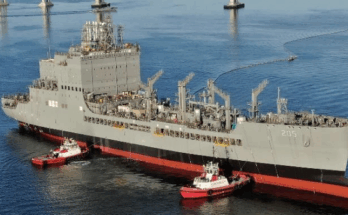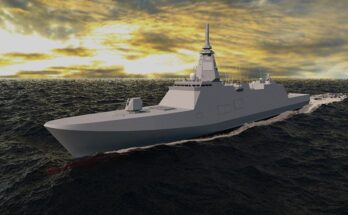The U.S. Navy’s third and final Zumwalt class destroyer, the future USS Lyndon B. Johnson (DDG 1002), was launched December 9 at General Dynamics-Bath Iron Works shipyard. The ship is scheduled to be christened in spring 2019.
The first ship in the class, USS Zumwalt (DDG 1000), was commissioned in September 2016. The second ship, the future USS Michael Monsoor (DDG 1001), is scheduled to be commissioned next month in Coronado, California.
The Navy originally sought to use a two-phase delivery approach for the class. Initial delivery would consist of hull, mechanical, and electrical systems, with the installation of combat systems representing the second phase. Congress included a provision in the FY17 defense authorization bill that established standards for naval ship deliveries, and required the Navy to adjust the DDG 1000 delivery dates accordingly. In other words, formal delivery of each ship will only occur when all systems have been installed.
As such, the formal delivery dates of these ships will occur after they have been commissioned. Final delivery of Zumwalt is forthcoming, while DDG 1001 and DDG 1002 are slated for final delivery in September 2020 and September 2022, respectively.
The Zumwalt class was originally designed as a land-attack platform, utilizing missiles and long-range Advanced Gun Systems to take out enemy forces ashore. However, the Navy has had a change of heart, and now wants the new destroyers to focus on the anti-ship mission. The ships may lose their Advanced Gun Systems during this transition.
The ships also generate more electrical power than their DDG 51 cousins, meaning they have enough power to someday enable employment of electromagnetic railguns and directed energy weapons.
Shaun's deep-rooted interest in military equipment continues in his role as a senior defense analyst with a focus on the United States. He played an integral role in the development of Forecast International's U.S. Defense Budget Forecast, an interactive online product that tracks Pentagon acquisition programs throughout the congressional budget process. As editor of International Military Markets – North America, Shaun has cultivated a deep understanding of the vast defense markets in the United States and Canada. He is a regular contributor to Forecast International's Defense & Security Monitor blog and has co-authored white papers on global defense spending and various military programs.




